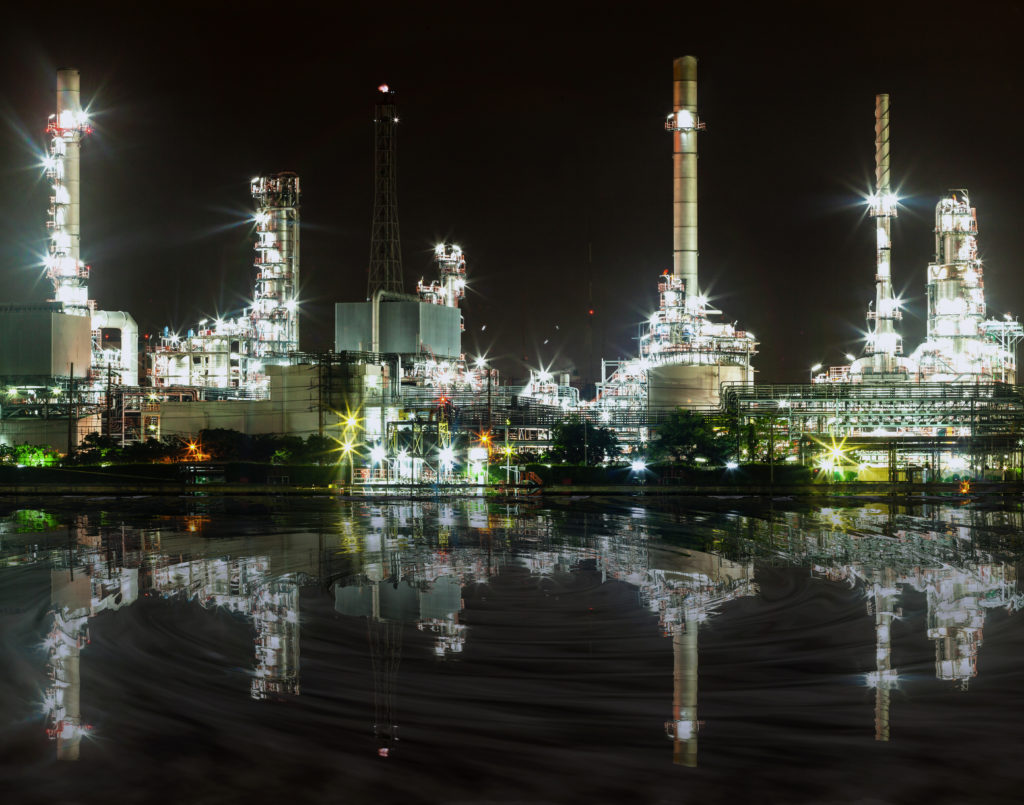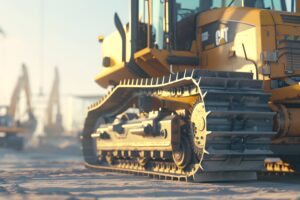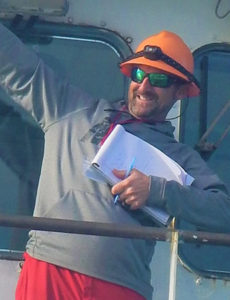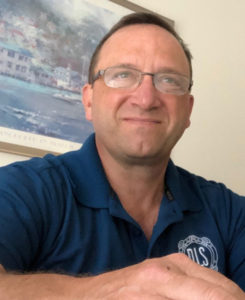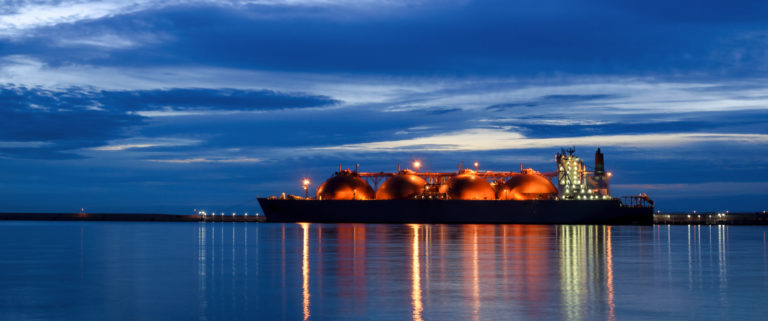
- February 21, 2022
- Industry, Marine News
- The Fuel on the Hill
“Beware the vividness of transient events.”
General Carl von Clausewitz 1780-1831
Petroleum is still here and will be prominent, although fading, for a few more decades. Due to an interesting combination of world events and reactions to these events, the oil industry has new life. Oil is closing in on $100 a barrel in some areas.
The gamble is paying off for the many ship owners who stuck with high sulfur fuel oil (HSFO) and built or retrofitted with scrubbers. Per Clarksons Research, 4,568, or 24.0% of the world’s fleet by Gross Tonnage (GT) have scrubbers. In 2021, there were 231 newbuild orders that included scrubbers. The price differential between HSFO and low sulfur fuel oil (LSFO) has widened, and the additional cost of scrubbers will now be recouped more quickly. Sources in the brokerage arena are indicating that scrubber-equipped ships are strong in the resale market.
The rise in oil prices has also brought back the offshore oil industry with the most modern and marketable designs and sectors generally getting a utilization boost. The number of functional rigs and OSV’s of all designs are down because many cannot be economically placed back into service. The lack of demand over the last five years has pretty much stopped new construction. Some of this equipment, rigs and OSV’s, may be suitable for conversion for use in the rapidly growing renewables market but additional worldwide scrapping is expected to reduce the excess capacity.
While western countries, forced by regulations and social pressures, move towards lower greenhouse gas emissions via renewable energy sources, the demand for traditional fuel sources remains strong elsewhere. Growing eastern countries, such as India, continue to be major users of petroleum for industrial growth and for their citizen’s needs for kerosene, diesel, and gasoline. They also continue to use LNG and coal for power and steel-making.
Of interest regarding the increased cost for a barrel of oil is the fact that the ensuing rise in fuel oil costs should send older less efficient ships to the scrap yard. This will be accelerated by their need to have acceptable GHG, EEXI, CII ratings in 2023. We will jump into this green alphabet soup in another posting.
The battle of words, science, and economics on the fuel(s) of the future
Per Clarksons as of November 2021, 34% of tonnage on order will be delivered with alternative fuel capability, with LNG in the lead.
Here, now, and in the immediate future, the solution is LNG – because it is available, affordable, and cleaner than the current petroleum fuels. Not clean, but cleaner.
LNG has been a known product in commercial and civilian use for about 100 years with major plusses in that it’s non-toxic and non-corrosive. The overarching negative is that it’s mostly methane. After water vapor, the two largest contributors to the greenhouse effect of warming are carbon dioxide and methane, estimated together at between 13% and 35% of the causation. While LNG reduces CO2 output by about 25% over HSFO, it still emits some methane after combustion, called methane slip, and methane is a greater contributor to the greenhouse effect, percentage wise, than CO2.
LNG being here and being plentiful, and for now being at a reasonable cost, the additional involved costs are for building distribution systems so that LNG fueled ships can refuel when necessary. This is being done at major ports where LNG bunker docks are being constructed to not only refuel ships at that site but to also distribute LNG via custom bunker barges, which in the case of LNG is a self-propelled barge or ship that will go to the customer. Clarksons states that there are 170 ports in the world with LNG bunkering facilities and this includes the major OSV site of Port Fourchon, Louisiana.
In this industry, the larger LNG tankers currently have a cargo capacity between about 125,000 and 175,000 cubic meters (4,415,000-6,180,000 cubic feet). The smaller coastal tankers have a capacity of 1,000 to 25,000 cubic meters (35,300-880,000 cubic feet). Bunker barges being built are reported to have capacities of 20,000 cubic meters and 7,500 cubic meters (705,000 and 265,000 cubic feet). Crowley’s bunker barge for U.S. use is reported to be 12,000 cubic meters while the Harvey Gulf ATB is listed at 4,000 cubic meters.
The problem facing vessel owners is that LNG use will not enable the shipping industry to reach the greenhouse gas emission targets of the too near future. These mandates are not just regulatory but are also being pressed by cargo interests, insurance companies and lenders. We will try to revisit these pressures in another blog.
SEA-LNG says LNG is the answer. As a coalition of LNG industries, they say it is the answer in a wider view of the world’s needs in that the industrial base and power plants in Asia will continue to need LNG and there is a need for more LNG tankers to feed the world. LNG tankers can run themselves on the “boil off” of their own cargo which is a nice plus while reducing CO2 emissions. The World Bank has come out against LNG as a bunker fuel and has asked countries not to build port bunker facilities. The argument is not just about the problems with methane slip which SEA-LNG says will be “virtually eliminated” in the future by technological improvements. The World Bank also opines that the LNG could be better used in its gaseous state as a feedstock in the production of green hydrogen and green ammonia until enough renewable electricity can be produced for that task.
Ships are built to have a 20+-year economic life, but regulations are going to mandate reductions before 20 years pass that LNG or LNG alone cannot meet.
What may be able to meet these regulations are hydrogen, ammonia, and methanol.
In the meantime, owners having to build now for the future are looking at dual fuel ships with engines that can operate on LNG and ammonia or LNG and biofuels, or methanol. Clarksons state that 4.3% of existing fleet tonnage, not a large percentage, and 34.8% of orderbook tonnage, a more impressive number, are capable of using alternative fuels or propulsion. This latter, alternative propulsion covers mostly wind/wind assist and electrical/battery propulsion. There are 259 existing ships and 96 on order that are “LNG Ready”, and on order are 35 “Ammonia Ready” and 4 “Hydrogen Ready”. Besides alternative propulsion, there are 4,398 ships (20.9% of fleet tonnage) that have Energy Saving Technologies (EST) which include propulsion but also fuel saving propellor ducts, rudder designs, air lubrication, and other design tweaks.
Modern ECO ships are given as 27.1% of the fleet by GT. Early indicators are that being classed as an ECO ship has possible greater earning potential and therefore greater potential on the Sales & Purchase (S&P) market. The next step will be the fight over ECO credentials as in the EEXI and CII, mentioned above.
While greener in use, none of the alternative fuels are “well to wake” green due to the necessary use of fossil fuels to produce them. It will not be until fuels like ammonia and methanol can be produced via renewable energy sources like wind farm electricity, solar or nuclear and become green ammonia and green methanol. Then they will be capable of reducing engine emissions to the levels mandated for 2050 with that finish line already being moved closer to the year 2040 by the users of ships, the ones with the money leverage.
A group called Cargo Owners for Zero Emission Vessels (coZEV) wants the ships they use for their cargoes to be zero emission by 2040. That is full life cycle zero GHG emissions which rules out a side route that will be in play for some users and operators, carbon credits. And these companies have clout.
Amazon, Unilever, Ikea, Patagonia, Tchibo, Michelin, Inditex, Brooks Running…these are some of the biggest players utilizing container ships. With the monster profits this liner section has made in the last two years, they can afford the new technology. Other groups, including the insurance industry, are increasing the pressure to comply with zero emissions. Many other industrial users of other types of ships are moving towards wanting to show cradle to grave green bona fides as part of their ESG programs and pledges.
There will be a race to the finish lines of 2040, or 2050 if this date is not moved up by IMO and Euro bodies. If the supply of alternate fuels is available in about ten years, as some are expected to be, the next ten years also produces an aging world fleet due to physical deterioration, but many of the vessels will also be technically and even economically obsolete due to owners that could not afford to comply with vessel upgrades necessary to meet GHG regulations. In this scenario there is a question as to whether the world’s shipyard capacity can meet the needs of 2030-2040.
All alternative fuels have drawbacks beyond not being available worldwide at levels to meet commercial demand.
Hydrogen from water takes a great deal of electricity to produce so the answer would be green hydrogen via renewable energy. You end up with a highly flammable gas that is lighter than air. When compressed, it is still very bulky due to its low energy level compared to fossil fuels with the tanks heavy, expensive to build, and energy intensive to fill. Hydrogen fuel cells are in use in highway vehicles and some small vessels, but the science is nowhere near usable in ocean service shipping.
The practical role for hydrogen is as a supporting player where green hydrogen can be used in place of fossil fuels to help produce ammonia and methanol which are more usable aboard ships.
Ammonia is a front runner not because it is clean but because science feels that its byproduct of nitrogen oxide (NOx) can be managed, and the world has long experience with the manufacturing and shipping of ammonia in the fertilizer industry. However, it is highly toxic in its vapor form and takes a lot of energy to produce. It would have to be used as green ammonia.
Methanol as a fuel has been in use aboard tankers that transport it as a cargo and burn it in their engines. However, this methanol is from natural gas and is “dirtier” than regular ships fuel. It is reported that there are at least MAN engines with water injection that cleans the exhaust. This brings us back to some of the anti-open system scrubber argument that you take the unwanted out of the air and put it in the water.
Again, here the use of green hydrogen in the process can produce green methanol.
Bio-fuels are in such limited supply it appears that the practical use, where it is available, is in a dual fuel engine to reduce the amount of fossil fuel burned.
Hinted at above in the storage of hydrogen, there will be shipboard storage problems with all fuels. This is illustrated in the simple science of the energy density of each fuel. These figures are from the U.S. Government’s table of fuel property equivalents. Visit here for the details.
The base line on the chart is for a gallon of E10 gasoline at 1.00. But ships don’t run on gasoline, so the closer comparison is diesel at .88 per gallon when compared to gasoline. The following are compared to a gallon of diesel.
Bio-diesel B100 .93 per gallon
LNG .17 per lb.
Methanol .45 per gallon
Hydrogen .40 per lb.
Ammonia .50 per gallon
On top of the cost of developing and using these fuels, the diesel engines that burn them must be suitable for the fuel or for operating with dual fuels. Since an engine room is a system, everything from the type and location of fuel tanks, the fuel delivery systems to the main engine(s), generators and boilers, the numerous safety systems must all work together, and even the lube oils used will need to be customized to accommodate the type fuel being burned.
Commercial use of steam reciprocating engines came about in 1800-1810. The commercial steam turbine came into use 100 years later around 1900, about the time of the first diesels. However, the diesel did not go to sea until the development of the turbo charger brought the weight-to-power ratio of a diesel where it made design and performance sense on board a ship. It wasn’t until the 1960’s that ships diverged from the designs of the 1940’s, which themselves hadn’t changed significantly from the designs of the 1910’s.
This current evolution is almost a revolution in its speed. This writer started learning steam engine rooms with their boilers, steam driven pumps and generators, steam powered deck equipment, and turbines and triple expansion steam engines. Then it was diesel engine rooms with mainly electrically powered auxiliaries, mostly DC before AC became the standard. Now diesel electric DC drives are common. This over 50+ years.
With these monthly articles, we have tried to share what we have learned in the field and in our research on technical and market trends. It is our goal to keep our customers and our other readers up on the current happenings in the industry so that they may be better prepared in thinking about and making decisions now that may be beneficial in the future.
While we have already had the experience of valuing a hydrogen powered vessel, DLS Marine is pleased that we will be involved in following the construction of an advanced fuel workboat. Our surveyors will get firsthand experience in the construction and assembly of the vessel and its systems while learning new technology directly from the naval architects, equipment vendors, and the shipyard.
-Norman Laskay
If you’d like to keep this conversation going, please email me at nlaskay@DLSmarine.com
